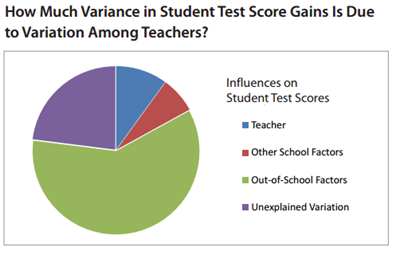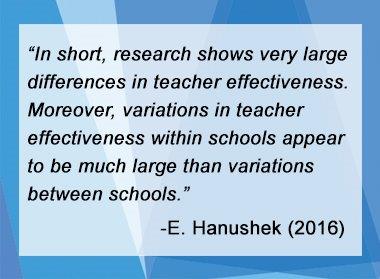For state education agencies, the Every Student Succeeds Act (ESSA) presents a challenge and an opportunity. It changes the question from “what do we have to do?” to “what new opportunities exist?” as states can now design their accountability systems to accomplish their own goals rather than complying with federal demands. The law lets states create an accountability plan that moves well beyond just test scores to consider the many aspects of student learning that make up a high-level, quality education. Within the new law, states are required to include one of the following measures of “Student Success and School Quality”:
- Student engagement
- Educator engagement—but note that all measures need to be broken down by student subgroups, so a measure of educator engagement would not meet the criteria
- Student access to and completion of advanced coursework
- Postsecondary readiness
- School climate and safety

As states consider the wide variety of measures available for these nonacademic factors, classroom-level indicators should take center stage. The safe option might be to use existing school-level data because they are readily available, but doing so ignores important ways that performance varies within a school and can lead to one-size-fits-all interventions that don't address the underlying issues.
One of the few consistent findings from education research is that a teacher has a greater impact on student outcomes than any other school factor (see here, here, and here). If we think of school as a vehicle, the true engine for change in education is classroom-level instruction. We can change paint colors or measure emissions or acceleration as much as we want to, but ultimately the car will only perform differently if enhancements are made within the engine. Why then, do we continue to focus on school-level measures and subsequent school-level interventions? Why do we require that all teachers attend school-wide professional development sessions that may be on a skill they have already mastered?
The collection of classroom-level data that can inform instruction allows for feedback reports and professional development plans to be individualized. Supporting this proposition is a line of research showing as much variation between classrooms as there is between schools (see here). The professional development needs of a beginning science teacher are likely different than those of an experienced art teacher in the same school. Principals and instructional leaders need to be able to draw upon this differentiated data to suggest tailored improvements and strategies for each teacher, informed by reliable data. Further, these data can be combined with school-level measures to gather a more complete perspective of how the school is performing.

There is evidence of the powerful impact of classroom-level data from teachers' use of interim assessments and benchmark tests (see here). Instead of relying on school-level interventions (such as implementing double class periods for math based on low school performance), teachers use classroom data to know exactly what objectives are not yet mastered by their students and can take more of a targeted, data-driven approach to interventions. The comprehensive approach of implementing both school-level and classroom-level strategies can facilitate more effective outcomes.
Examples of classroom-level measures that inform instruction include student surveys of teacher practice, student self-reported measures of engagement, and independent observations of classroom-student engagement. Classroom-level student surveys ask questions about a specific teacher's instruction (for example, “my teacher reviews before the end of the lesson,” or “we are learning or working during the whole class”) or about a student's reported level of engagement. The research shows that these measures predict both student achievement and other important outcomes, such as student self-efficacy (see here). Observations of student engagement from certified administrators can serve to triangulate this student perception data to identify practices in need of immediate intervention. Data from these measures can be aggregated to the school level for inclusion in the accountability system, with measures weighted by student to ensure representation and fairness.
Importantly, teachers need access to personalized data to support adjustments to their individual instruction. When that happens, and it's combined with the necessary supports to implement changes suggested by the data, that's the sound of an engine that's revving.



